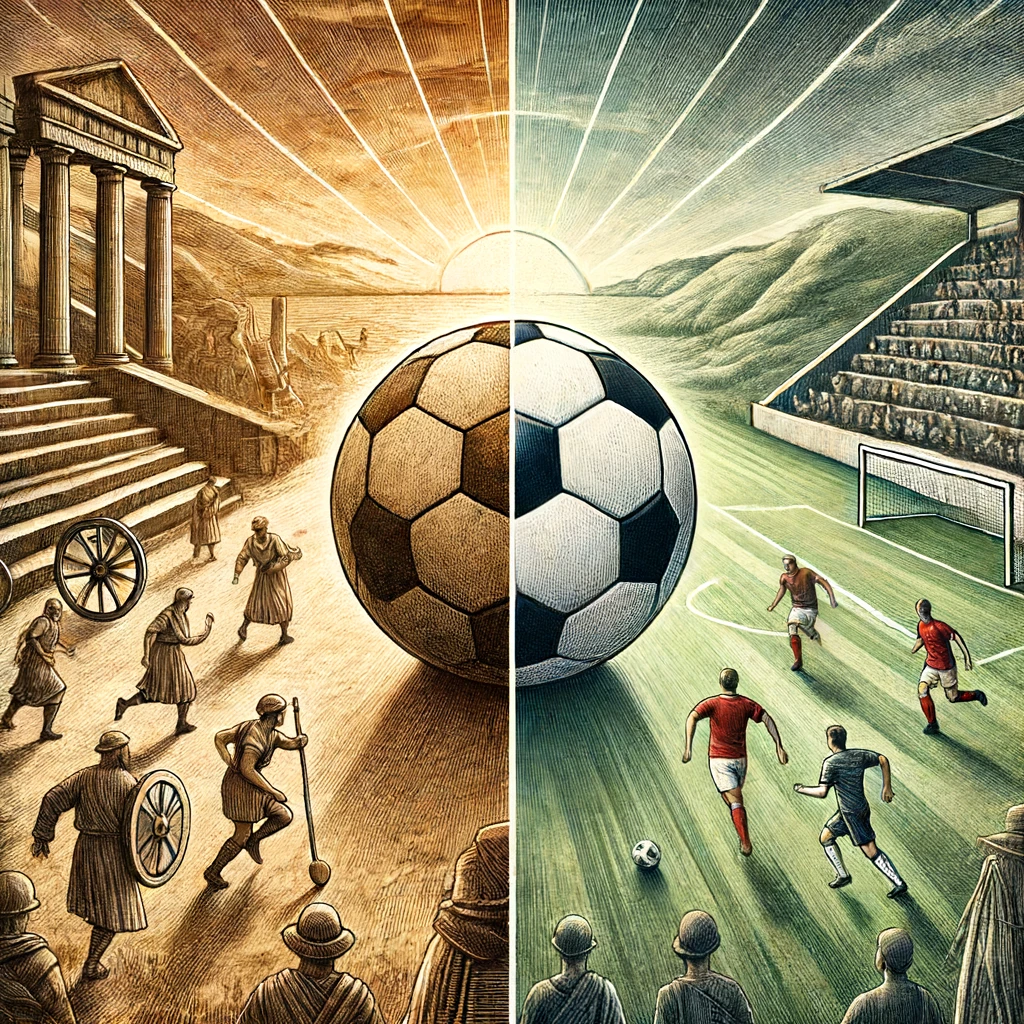Soccer, known as football in most parts of the world, is more than just a game; it’s a global phenomenon that has captured the hearts of millions. But have you ever wondered who invented soccer and how it evolved into the sport we know today? Let’s take a journey through the history of soccer, exploring its origins, development, and the key milestones that have shaped it.
Ancient Beginnings
The story of soccer begins in ancient civilizations, where various cultures played different forms of ball games. These early games were the precursors to the modern sport, though they differed significantly in rules and style. For example, in ancient China, a game called Cuju involved kicking a ball through a net. Similarly, the Greeks and Romans played ball games for both recreational and military training purposes.
The Birth of Modern Soccer
The modern version of soccer, however, finds its roots in England. It was in the 19th century that various forms of football were being played in English public schools, each with its own set of rules. This led to confusion and disputes, prompting the need for standardization.
In 1863, a significant milestone was reached. Representatives from several football clubs in England met in London to establish a unified set of rules. This meeting led to the formation of the Football Association (FA), which is credited with inventing modern soccer. The FA’s rules distinguished soccer from rugby football, creating a standardized form of the game that could be universally understood and played.

Photo by Mike
Key Milestones
1863: The Formation of the Football Association (FA)
The FA was established in London, and it set the first official rules for soccer, differentiating it from rugby football.
The First International Match
The first official international soccer match took place in 1872 between England and Scotland, marking the beginning of international competition.
Spread to Other Countries
Soccer quickly spread beyond England’s borders. By the late 19th and early 20th centuries, the sport had gained popularity in Europe, South America, and beyond.
The World Cup
In 1930, FIFA (Fédération Internationale de Football Association) organized the first World Cup in Uruguay. This event solidified soccer’s status as a global sport.
What to start playing soccer? Do not forget to get yourself a pair of soccer cleats to dominate on the field.

Why Was Soccer Invented?
Soccer was formalized to create a unified set of rules for the various football games played in England. The need for standardization arose from the desire to ensure fair play, consistency, and to differentiate soccer from other forms of football, such as rugby.
The Evolution of Soccer
Since its formalization in 1863, soccer has undergone significant evolution. Technological advancements, changes in rules, and the professionalization of the sport have all contributed to its development. Today, soccer is played and watched by millions around the world, with major tournaments like the FIFA World Cup, UEFA Champions League, and domestic leagues attracting massive audiences.

Photo by Phxtosene
FAQs About the Origins of Soccer
What are some ancient games similar to soccer?
Ancient games similar to soccer include Cuju in China, Harpastum in Rome, and Episkyros in Greece. These games involved kicking a ball towards a goal, similar to modern soccer.
How did the rules of soccer evolve?
The rules of soccer evolved through a series of meetings and agreements among English football clubs in the 19th century, culminating in the formation of the Football Association in 1863. The rules were further refined over the years to improve fairness and safety.
Which soccer cleats to start with?
Mizuno USA manufactures and distributes high quality footwear. We have couple articles for you to check which model suits you best.

Why is soccer called football in most parts of the world?
Soccer is called football in most parts of the world because the game is played primarily with the feet. The term “soccer” originated in England as a slang abbreviation of “association football.”
What was the first soccer club?
The first soccer club is generally considered to be Sheffield Football Club, founded in England in 1857. It played a crucial role in the early development of the game.
When was the first World Cup held?
The first World Cup was held in 1930 in Uruguay. It was organized by FIFA and has since become the premier international soccer competition.
How did soccer become popular worldwide?
Soccer became popular worldwide through British influence, international matches, and the formation of FIFA. The simplicity of the game and minimal equipment required also contributed to its global appeal.
What is the oldest soccer competition?
The oldest soccer competition is the FA Cup, first held in 1871-1872 in England. It remains one of the most prestigious knockout tournaments in the sport.
How did soccer spread to South America?
Soccer spread to South America through British immigrants, sailors, and workers in the late 19th and early 20th centuries. The sport quickly gained popularity and became deeply ingrained in the culture.
Who was the first professional soccer player?
The first professional soccer player is widely recognized as William “Pudge” Heffelfinger, who played in the late 19th century. The professionalization of the sport grew rapidly from there.
How has technology impacted soccer?
Technology has significantly impacted soccer through advancements like video assistant referees (VAR), goal-line technology, and improved equipment and training methods, enhancing the accuracy and fairness of the game.
Conclusion
Soccer’s journey from ancient ball games to the modern sport we love today is fascinating. The game’s formalization in England in 1863 by the Football Association was a pivotal moment that led to the global phenomenon of soccer. Understanding the origins and evolution of soccer gives us a deeper appreciation of the sport’s rich history and enduring appeal.

